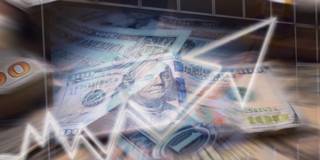Core dollar exchange rates have so far been surprisingly stable during the pandemic, most likely because major central banks’ policy interest rates are effectively frozen at or near zero. But although the current stasis could last awhile, it will not last forever.
CAMBRIDGE – With alternative assets such as gold and Bitcoin thriving in the pandemic, some top economists are predicting a sharp fall in the US dollar. This could yet happen. But so far, despite inconsistent US management of the pandemic, massive deficit spending for economic catastrophe relief, and monetary easing that Federal Reserve Chair Jerome Powell says has “crossed a lot of red lines,” core dollar exchange rates have been eerily calm. Even the ongoing election drama has not had much impact. Traders and journalists may be getting worked up about the greenback’s daily travails, but for those of us who study longer-term exchange-rate trends, their reactions to date amount to much ado about nothing.
To be sure, the euro has appreciated by roughly 6% against the dollar so far in 2020, but that is peanuts compared to the wild gyrations that took place after the 2008 financial crisis, when the dollar fluctuated between $1.58 and $1.07 to the euro. Similarly, the yen-dollar exchange rate has hardly moved during the pandemic, but varied between ¥90 and ¥123 to the dollar in the Great Recession. And a broad dollar exchange-rate index against all US trading partners is currently sitting at roughly its mid-February level.
Such stability is surprising, given that exchange-rate volatility normally rises significantly during US recessions. As Ethan Ilzetzki of the London School of Economics, the World Bank’s Carmen Reinhart, and I discuss in recent research, the muted response of core exchange rates has been one of the pandemic’s major macroeconomic puzzles.

CAMBRIDGE – With alternative assets such as gold and Bitcoin thriving in the pandemic, some top economists are predicting a sharp fall in the US dollar. This could yet happen. But so far, despite inconsistent US management of the pandemic, massive deficit spending for economic catastrophe relief, and monetary easing that Federal Reserve Chair Jerome Powell says has “crossed a lot of red lines,” core dollar exchange rates have been eerily calm. Even the ongoing election drama has not had much impact. Traders and journalists may be getting worked up about the greenback’s daily travails, but for those of us who study longer-term exchange-rate trends, their reactions to date amount to much ado about nothing.
To be sure, the euro has appreciated by roughly 6% against the dollar so far in 2020, but that is peanuts compared to the wild gyrations that took place after the 2008 financial crisis, when the dollar fluctuated between $1.58 and $1.07 to the euro. Similarly, the yen-dollar exchange rate has hardly moved during the pandemic, but varied between ¥90 and ¥123 to the dollar in the Great Recession. And a broad dollar exchange-rate index against all US trading partners is currently sitting at roughly its mid-February level.
Such stability is surprising, given that exchange-rate volatility normally rises significantly during US recessions. As Ethan Ilzetzki of the London School of Economics, the World Bank’s Carmen Reinhart, and I discuss in recent research, the muted response of core exchange rates has been one of the pandemic’s major macroeconomic puzzles.